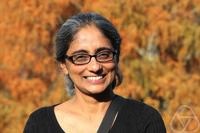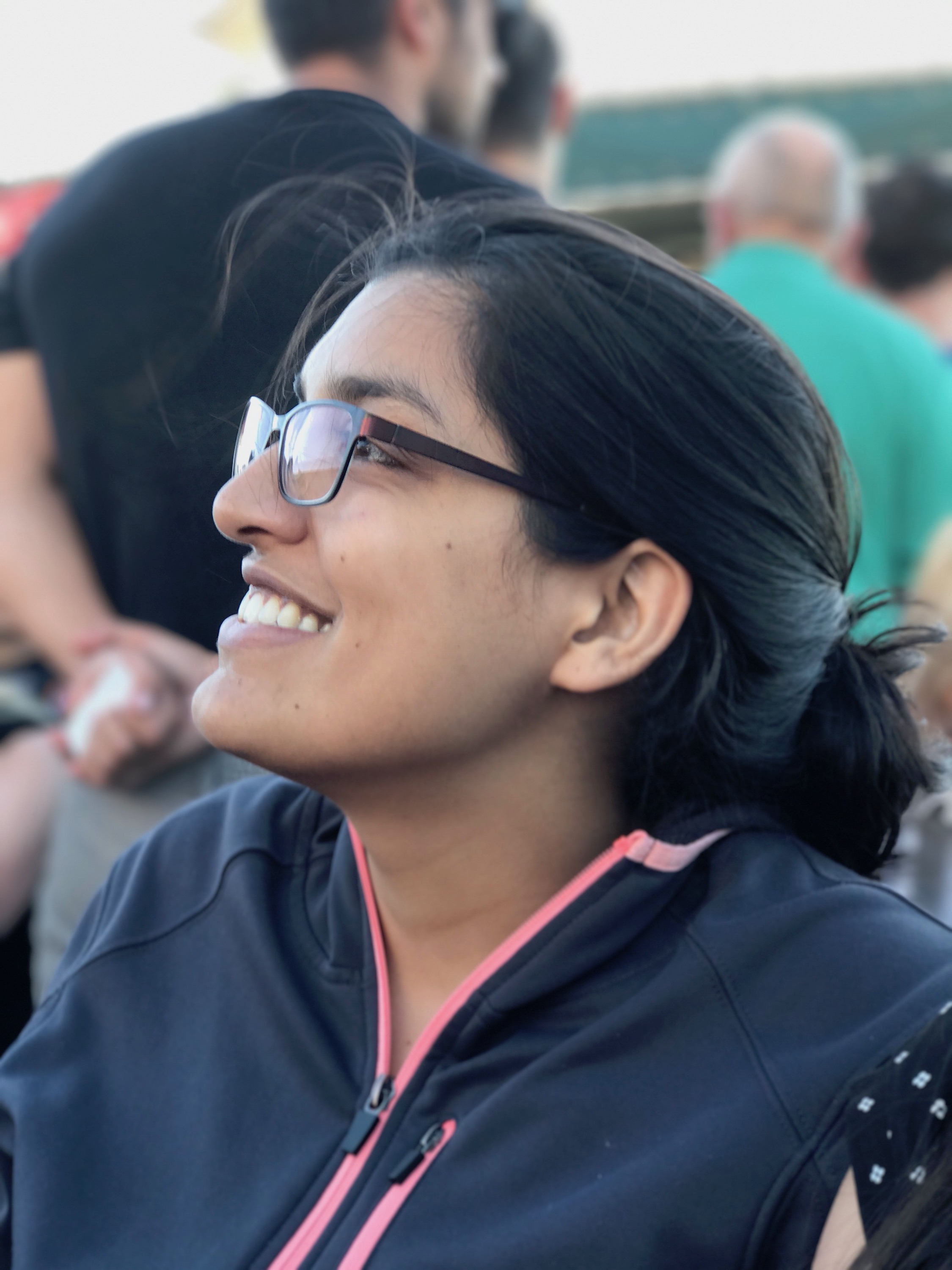BRIDGES
Building Relationships for an Inclusive and Diverse Group of Emerging Students
July 10–12, 2024, Salt Lake City, Utah
This conference is aimed towards early graduate students and advanced undergraduate students interested in algebraic geometry, commutative algebra, geometric group theory, and number theory.
The goals of this conference are to:
- Foster a sense of community amongst underrepresented groups in mathematics,
- Introduce participants to possible research areas,
- Expose participants to role models and possible mentors.
You can register for the conference here.
This conference is part of the RTG: Algebra, Geometry and Topology at the University of Utah funded by the NSF RTG grant #1840190. You can also check out the websites for BRIDGES 2021 and BRIDGES 2022. If you're looking for the interdisciplinary conference on connections between mathematics and art, please visit www.bridgesmathart.org/b2022.
Schedule
Below is a tentative schedule for the conference. All times are Mountain Daylight Time.
| Time | Description | Room |
|---|---|---|
| Wednesday, July 10th | ||
| 8:30-8:55 | Check-In/Breakfast |
MLIB 1130 |
| 8:55-9:00 | Welcome | MLIB 1130 |
| 9:00-9:50 | Lecture 1: Rekha | MLIB 1130 |
| 9:50-10:15 |
Coffee |
MLIB 1130 |
| 10:15-11:05 | Lecture 1: Kim | MLIB 1130 |
| 11:15-12:30 |
Lightning Talks |
MLIB 1130 |
| 12:30-1:45 |
Lunch |
MLIB 1130 |
| 1:45-2:35 |
Lecture 1: Ila | MLIB 1130 |
| 2:35-3:00 |
Coffee |
MLIB 1130 |
| 3:00-4:30 | Problem Session |
Rekha: MLIB 1130 Ila: MLIB 1150 Kim: MLIB 1715 |
| Thursday, July 11th | ||
| 8:30-8:55 |
Breakfast |
MLIB 1140 |
| 8:55-9:00 | Daily Introduction | MLIB 1130 |
| 9:00-9:50 | Lecture 2: Rekha |
MLIB 1130 |
| 9:50-10:15 |
Coffee |
MLIB 1130 |
| 10:15-11:05 | Lecture 2: Ila |
MLIB 1130 |
| 11:30-12:30 | Panel | MLIB 1130 |
| 12:30-1:45 |
Lunch |
MLIB 1140 |
| 1:45-2:35 |
Lecture 2: Kim |
MLIB 1130 |
| 2:35-3:00 |
Coffee |
MLIB 1140 |
| 3:00-4:30 |
Problem Session | Rekha: MLIB 1130 Ila: MLIB 1150 Kim: MLIB 1760 |
| Friday, July 12th | ||
| 8:30-8:55 |
Breakfast |
MLIB 1130 |
| 8:55-9:00 | Daily Introduction | MLIB 1130 |
| 9:00-9:50 | Lecture 3: Ila |
MLIB 1130 |
| 9:50-10:15 |
Coffee |
MLIB 1130 |
| 10:15-11:05 | Lecture 3: Kim | MLIB 1130 |
| 11:30-12:20 | Lecture 3: Rekha |
MLIB 1130 |
| 12:20-12:30 | Closing | MLIB 1130 |
Speakers
Rekha R. Thomas, University of Washington

Rekha Thomas is a Walker Family Endowed Professor of Mathematics at the University of Washington in Seattle. She received her Ph.D. in Operations Research from Cornell University in 1994, followed by postdocs at Yale University and ZIB, Berlin. Her research interests are in Optimization, Combinatorics and Applied Algebraic Geometry.
Lecture Series: Three Problems on Graphs
Abstract: In this talk series, I will introduce
three problems on graphs that turn out to have intimate
connections to combinatorics, discrete and convex
geometry, and optimization. The first is about
designs in graphs which are subsets of vertices over which
functions on graphs have the same average as over the
whole graph. The second topic is about sparsifiers of a
graph that preserve the low end of the spectral
information of the graph. The final topic is about graphs
that are rigid in the sense that allowing weights on their
edges will not increase the second smallest eigenvalue of
the Laplacian or decrease the largest eigenvalue. All of
these problems have connections to applications and bring
up new research questions.
These talks are based on the following papers:
https://arxiv.org/pdf/2204.01873
https://arxiv.org/pdf/2306.06204
https://arxiv.org/abs/2402.11758
Lecture
Notes
Problem
Session
Kim Ruane, Tufts University

Kim is a Professor in the Department of Mathematics at Tufts University whose research is in Geometric Group Theory. Kim is a first-generation college student with a somewhat colorful journey through the educational system. Upon hearing that Kim wanted to get a Ph.D. in math, her high school guidance counselor replied, “well if you’re not in jail, maybe…”. With solid mentoring and support from a variety of people as well as some good old-fashioned hard work, she was able to realize her dream of becoming a college professor who gets to do math and teach math for a living. Now that she is an established Professor, she prefers collaborative mathematics, as well as teaching and mentoring at all levels. Her current passion is prison education. She regularly teaches math courses inside a medium security prison as part of the Tufts University Prison Initiative through Tisch College (TUPIT). The program allows students to work towards an Associates and/or BA degree while incarcerated. This has been the most rewarding and eye-opening experience in terms what it means to teach mathematics.
Lecture Series: Infinite Groups as Geometric
Objects
Abstract: A finitely generated, infinite group can
be viewed as a geometric object in two ways: via a Cayley
graph for the group or by realizing the group as a group
of isometries of a more robust (non-compact) metric space.
In this way, the algebraic properties of the group are
related to the geometric properties of a space. This
viewpoint goes back to the work of Dehn in the 1920’s on
surface groups, but was popularized by Gromov, Cannon,
Thurston and others in the late 1980’s with the definition
of Gromov hyperbolic group. The metric spaces we work with
can be compactified by adding a boundary to them. My work
in the area has centered on the study of boundaries for
different kinds of group. In the first lecture, we will
give an introduction to studying groups as geometric
objects. In the second, we will study lots of examples and
discuss boundaries. In the third lecture, I would like to
discuss the Cannon Conjecture since it is the conjecture
that motivated me to study boundaries when I was a
graduate student.
Ila Varma, University of Toronto

Ila Varma is an Assistant Professor at the University of Toronto. She graduated from Princeton University in 2015 with a PhD after obtaining a MSc from Leiden University and a BS from Caltech. Her research is in number theory, with a current focus in arithmetic statistics. Ila is heavily involved in outreach, unlearning inequitable academic and teaching practices, and championing marginalised voices, ideas, and individuals within the mathematics community. In line with these values, she is the founder of a variety of mathematical activities across the globe, including PROMYS India, a free program for high school students, which takes place at IISc Bangalore and the Equity Forum, a seminar for all members of the mathematical community at University of Toronto.
Lecture Series: Counting Number Fields and
Predicting Asymptotics
Abstract: A foundational question in number theory,
specifically in the subfield called arithmetic statistics,
is: How many number fields are there? Number fields are
objects that are utilized heavily in the study of
number theory and algebraic geometry. Typically, we are
introduced to number fields in Galois theory classes. More
precisely, number fields are vector spaces over
that include both the rational numbers and the roots of a
fixed polynomial
under the operations of addition and multiplication. Like
other fields, every nonzero element of a number field has
a multiplicative inverse. If we allow ourselves to vary
over polynomials of a fixed degree
, we
can refine the question to the way number theorists like
to study it: How many number fields of a fixed
dimension are
there? And, if we filter the family of polynomials not
only by degree but on the types of symmetries the roots
have dictated by what's known as the Galois group, we
arrive at the questions surrounding Malle's Conjecture:
precisely, how does the count of number fields of degree n
whose normal closure has Galois group G grow as their
discriminants tend to infinity? We will discuss the
history of this question including its connection to the
inverse Galois problem and take a closer look at the story
in the case that
,
i.e. the counts of quadratic, cubic, and quartic fields.
Lecture Notes
1
Lecture Notes 2
Problem
Session
Registration
The application period for conference funding has now closed.
If you would like to participate, and do not need funding,
please register here.
If you would like to participate online via Zoom, please register here.
Feel free to contact us if you have any questions.
Local
Here is a link to a campus map.Travel
Salt Lake City International airport is the closest airport. It is conveniently located a 25 minute drive from the University of Utah. From the airport there are several options to reach the University Guest House. The cheapest option is to take Trax, Utah's light rail system which can be paid for with cash, card, or the RideUTA app (this is the easiest option). To help plan transit, you can use either Google Maps or the Transit app. As you exit the airport, follow the signs for ground transportation and walk all the way to the left of the platform to get on the Trax Green Line at the Airport Station. Take the Green Line until Courthouse Station and transfer there to the Red Line heading to the University Medical Center. Get off at Fort Douglas Station, cross Mario Capecchi Drive and head northeast to the Guest House. Please be aware that last Trax leaves Courthouse at 11:01pm and so you would need to catch the Green Line at 9:52pm to make your connection. The other option for transportation is either by Taxi or Uber/Lyft.
Accommodations
All funded participants will be staying at the University Guest House. Unfortunately, we cannot offer unfunded participants a conference rate at the hotel, but we are happy to try to help arrange for roommates - please email us if you would like us to connect you with potential roommates.
Food
There are several options for food around University of Utah:
- Student union: Panda Express, Jamba Juice, University Cafeteria
- Cafe at the Utah Museum of Fine Arts on campus
- Restaurants on 1300 E: Indochine, B&D Burgers, the Pie Pizzeria, Osteria Amore, Rio Grande, Subway
- Downtown: There are lots of options for dining downtown that can easily be reached via public transit
- Coffee: Some coffee and snacks will be provided, but if you find yourself needing more you can find Two Creek, a local coffee shop, in WBB and a Starbucks in the Campus Store
Restrooms
The University of Utah LGBT Resource Center has an inventory of single-stall and/or gender-free restrooms on campus that you can find here. The locations that will be most convenient to the conference are in the Biology Building (BIOL), the James Fletcher Building (JFB), the Marriott Library, and the Student Union.
Wifi
If you are affiliated with a College or University you can use the eduroam network using your login from your instution. Alternatively you can log onto the network UGuest following the instructions.
Activities in and around Salt Lake City
- Hiking: There are several trails easily accessible from the Guest House. The living room trail is particularly popular.
- Natural history museum.
- Great Salt Lake: Antelope Island State Park is about an hour drive away.
Organizers
For the organization of this conference we created a committee in the AWM student chapter at the University of Utah.
- Anne Fayolle
- Thomas
Hill
- Jenna Judd
- Madison Pearce
- Sandra Rodríguez
Organizing Faculty: Priyam Patel, Karl Schwede.